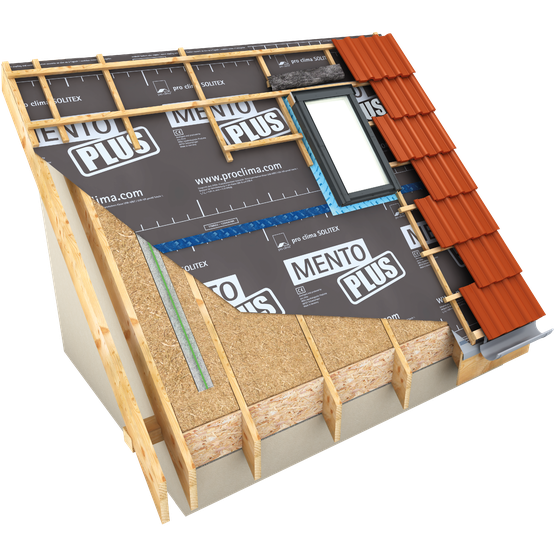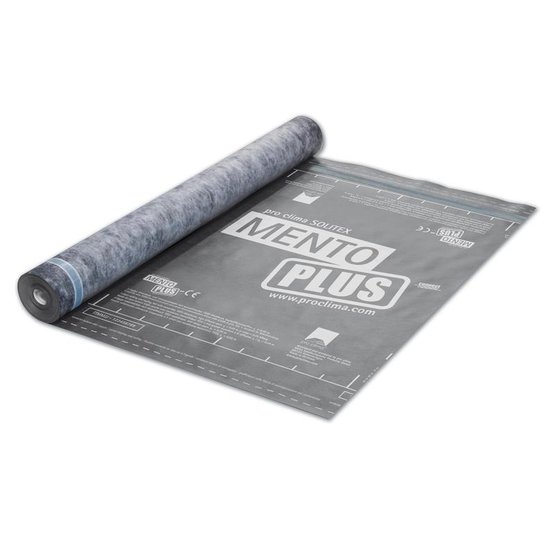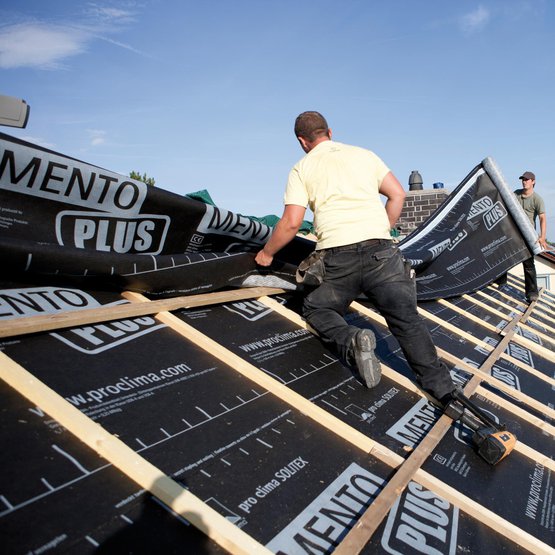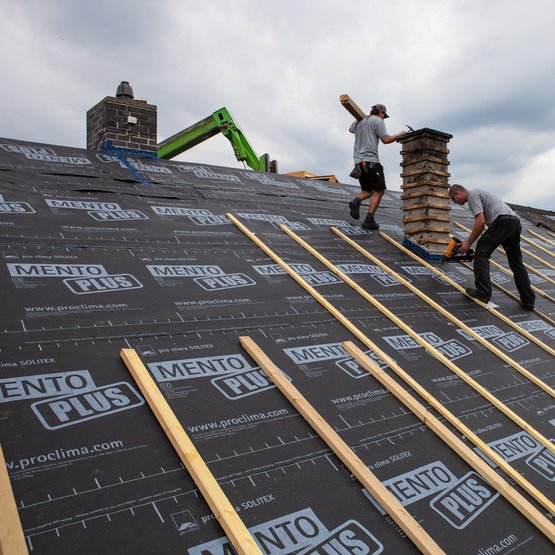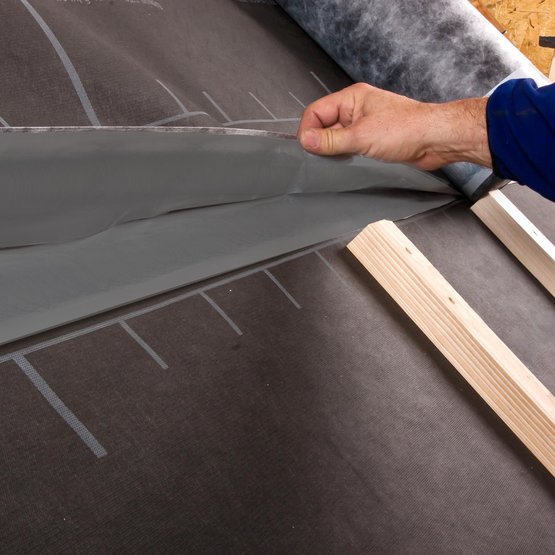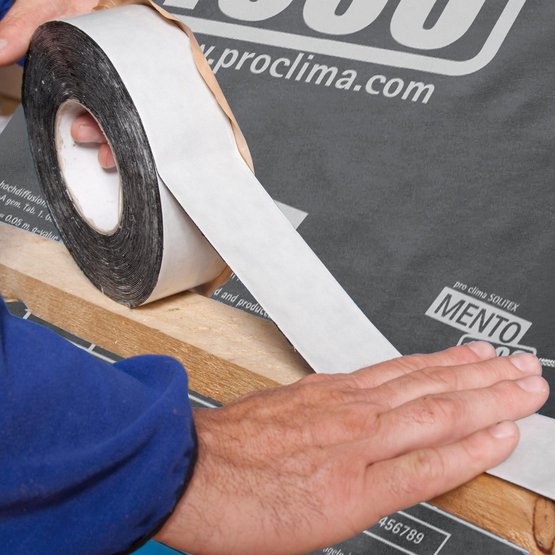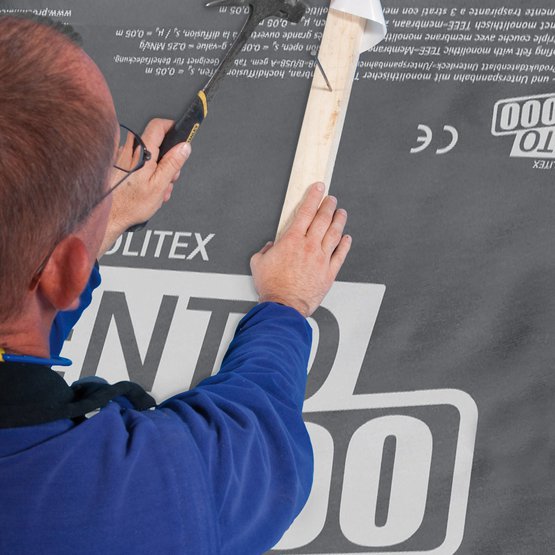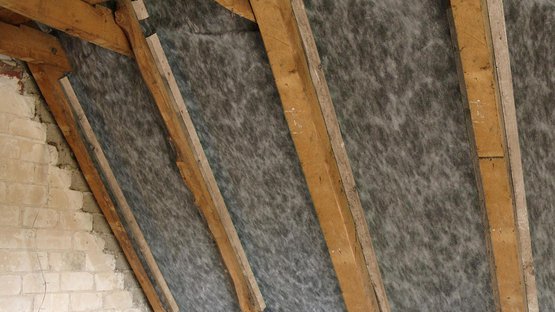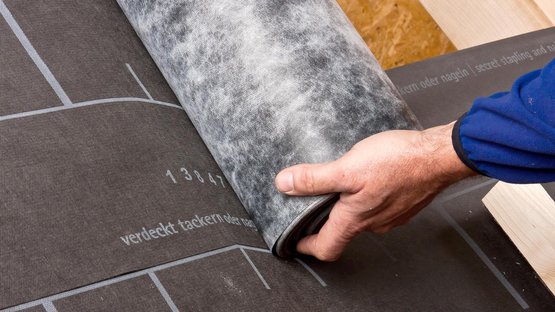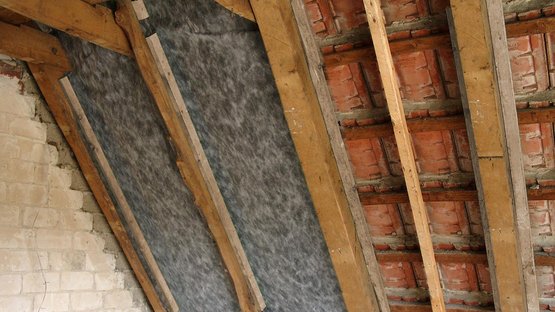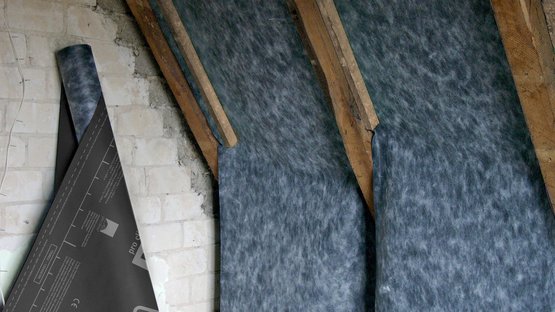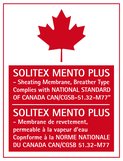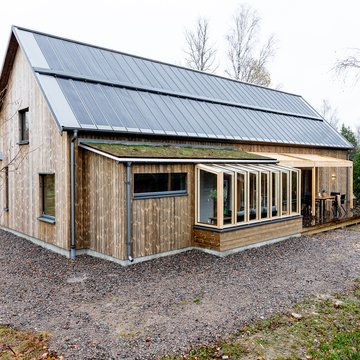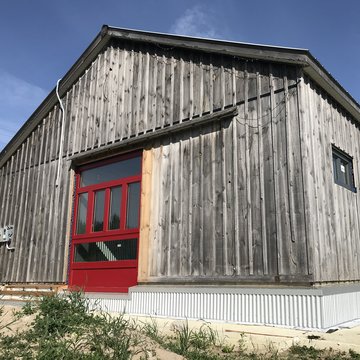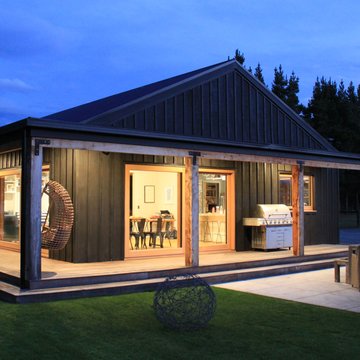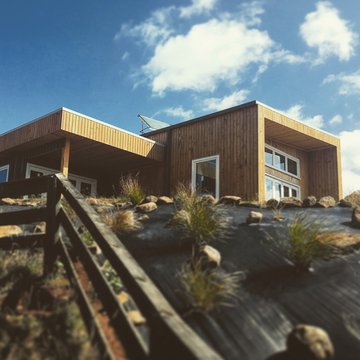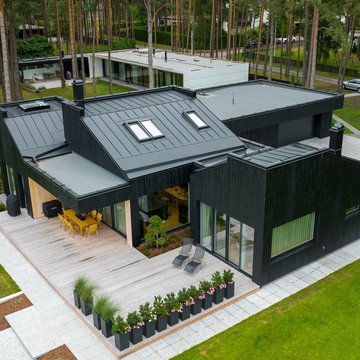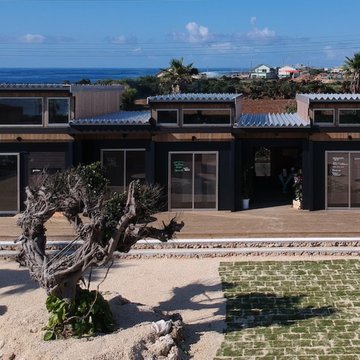Reinforced roofing underlay, with self-adhesive strips
Advantages
- Extremely robust thanks to reinforcement: suitable for blown-in insulation materials
- Flexible planning of construction schedules thanks to 4 months of outdoor exposure
- Well-protected building structures: highly diffusion-open and maximum protection against driving rain and hail
- Dry building structures: pore-free TEEE functional film actively transports moisture to the outside
- Long-term protection thanks to the high resistance to ageing and heat of the TEEE functional film
- Provides protection during the construction period: suitable as a temporary covering
- Quick and reliable adhesion thanks to the integrated ‘connect’ self-adhesive strips on the long edges of the membrane
Areas of application
For use as a diffusion-open roofing underlay over roof sheathing, MDF and wood-fibre underlay panels, and over all thermal insulation materials, including blown-in insulation materials.
Installation instructions
Installation video
General conditions
SOLITEX MENTO membranes are to be installed with the printed side facing the installation technician. The membranes are to be installed as a roofing underlay membrane horizontally (parallel to the eave) in a taut manner with no sagging. Ensure that the subsurface is even when installing the membrane as a roofing underlay membrane. When the membrane is installed as a freely hanging underlay membrane, the rafter spacing is limited to 100 cm (3 ft).
Fasteners may not be applied in areas where water runs off in a collected manner (e.g. in roof valleys).
Ridge ventilation should be provided in the case of non-insulated attics that have not been converted. To do so, install the SOLITEX membrane in such a way that it stops 5 cm (2”) before the ridge. In addition, permanent ventilation fittings should be provided in the unconverted attic. The membrane should be protected against the long-term impacts of UV radiation (e.g. by darkening windows).
The SOLITEX MENTO PLUS roofing underlay can be used as temporary covering for up to 4 months to protect the building structure during the construction phase in accordance with the regulations of the Central Association of the German Roofing Trade (ZVDH); in this case, the roof pitch must be at least 14° (approx. 3:12). Other national regulations may vary. The system products TESCON NAIDECK nail-sealing tape, ORCON F adhesive sealant and TESCON VANA are to be used for sealing of overlaps and joints. The connect variant has two self-adhesive strips for reliable external sealing. The specifications of the applicable national regulations are to be taken into account when carrying out installation and adhesion.
Under the regulations of the German Roofing Trade, these membranes are suitable as an additional measure for rain protection when installed as freely hanging underlay membranes with simple overlapping underneath roof tiles; when installed over timber sheathing as an underlay membrane with simple overlapping, SOLITEX MENTO membranes are also suitable as an additional measure for rain protection in the case of more demanding requirements.
Additional instructions for blown-in insulation materials SOLITEX MENTO PLUS can also be used as a boundary layer for blown-in insulation materials of all types. It is recommended to use nail-sealing underneath the counter battens (e.g. TESCON NAIDECK). The battens must already be fitted before the blowing-in process is carried out. A protruding lath must be installed under the horizontal roof battens in the centre of the space between the rafters so that moisture occurring under the covering is drained off centrally between the rafters. This protruding lath should be at least 1 cm (⅜”) thicker than the counter battens. It limits the bulging of the membranes during the blowing-in process and ensures the necessary cross-sectional area for ventilation.
If the insulation material is blown in from the outside, the blow-in holes can subsequently be taped over using TESCON VANA with a width of 15 cm (6”).
SOLITEX MENTO® system - Retrofitting roofing underlay from the inside
In cases where there is no roofing underlay present, underlay can be retrofitted from the inside using one of the SOLITEX roofing underlays. SOLITEX membranes are equipped with a monolithic, pore-free functional film. As a result, they are watertight against water from the outside and can actively transport moisture from the building structure into the open at the same time. This ensures optimal protection for the insulation structure.
If blown-in insulation materials are used, use of the reinforced product variants SOLITEX MENTO PLUS or SOLITEX MENTO ULTRA is recommended.
Advantages
- Well-protected building structures: highly diffusion-open and maximum protection against driving rain
- Dry building structures: pore-free TEEE functional film actively transports moisture to the outside
- Long-term protection thanks to the high resistance to ageing and heat of the TEEE functional film
- SOLITEX MENTO PLUS / ULTRA: extremely robust thanks to reinforcement, suitable for blown-in insulation materials
Reliable system for installation from the inside
Roof structures without underlay and thus without a counter-batten plane are often encountered on existing buildings. If insulation is to be fitted on these structures, it is recommended to first retrofit an exterior windtightness layer to improve the reliability of the structure. This measure is recommended for a max. period of 5 years.
The roof pitch of the roof tiles must not be less than the standard roof pitch. The roof pitch must be at least 20°. Installation is carried out from the inside, proceeding in turn from one space between rafters to the next. Battens at the corners of the rafters/tile battens provide the necessary ventilation for the roof covering. A ‘protruding lath’ fitted in the middle of the space between rafters forms a valley in the SOLITEX membrane. In this way, any water that has entered can be drained off to the middle of the area between the rafters (away from the rafters) and towards the eaves.
Attach the SOLITEX membrane to the rafters using battens or DASATOP FIX. The membranes must be overlapped in a waterproof manner and must drain reliably into the open.


